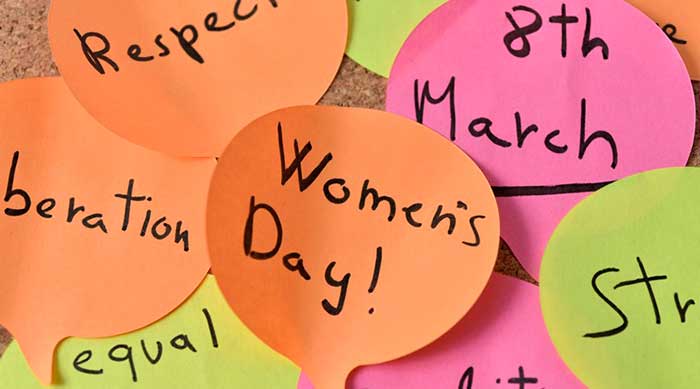By Naba Kishor Pujari
25 years after the Beijing Declaration and Platform for Action set out a clear path on how to achieve gender equality, the world has witnessed remarkable progress.
However, the Report of the UN Secretary-General on the Beijing Declaration and Platform for Action points out that violence against women and girls remains pervasive. And, this is not just a gender gap but a power gap, said the delegate who were assembled to celebrate International Women’s Day 2020 which was organised by Atmashakti Trust, Mahila Shramajeebi Manch, Odisha and Odisha Shramajeebee Manch here in Bhubaneswar today.
Gender equality context in India
Women in India represent 29 percent of the labour force, down from 35 percent in 2004. More than half of the work done by women in India is unpaid, and almost all of it is informal and unprotected. Women are not well represented in most sectors, including business leaders. Though they comprise almost 40 percent of agricultural labour, they control only 9 percent of land in India. Women are also shut out of the formal financial system. More than half of India’s women don’t have cellphones, and 80 percent don’t use them to connect them to the internet. If as many women as men had phones, it could create US$17 billion in revenue for phone companies in the next 5 years, according to a report published by UN India Business Forum.
Inequality at its top: Shocking figures
· World Economic Forum (WEF) has recently released Gender Gap Index-2019 that shows India has slipped to 112th position. India has moved downwards four places in terms of gender equality amid increasing disparity in terms of women’s participation in the development of the country. The country is ranked in the bottom five on health and economic fronts.
· An Oxfam report on inequality published in January revealed that in the workplace, women still receive 34% less wages than their male counterparts for the same work.
· Also, women in India spend around five hours a day on unpaid care work while men devote a mere half an hour on average. “This disproportionate burden of unpaid care work by women means they lose out on opportunities to participate in paid labour or are forced to undertake paid labour leading to their time poverty and loss in well-being.
· In India, women make up only 14.4 per cent of the parliament (122nd position among 153 countries) and 23 per cent of the cabinet (69th position).(Source: Inter-Parliamentary Union Report)
· According to data released by the NCRB for 2018, close to 3.78 lakh crimes against women were recorded in 2018, up from 3.59 lakh in 2017. Domestic violence against women is the top gender-related crime. In all, 89,097 crimes against women were registered across India in 2018 as against 86,001 cases in 2017. Despite campaigns such as ‘Beti Bachao Beti Padhao’, the crime rate per lakh women increased to 58.8 in 2018 compared with 57.9 in 2017.
Gender Equality Context in Odisha
· According to NFHS 4, just 46.5 percent of women aged 15-49 years in Odisha own land alone or jointly with someone. The ownership of individual land holdings by women is even more meagre in Odisha. Mere 3.3 percent of women in Odisha own individual land holdings and out of the total individual land holdings owned by women 74.8 percent was marginal land holdings.
· Odisha contributes to about 3% of India’s population but, with 94.5 cases of crime against women per lakh people, the state also contributed to 5.6% of all crime against women in 2017. It ranks as the second-worst state in the country on this front, as per the data released by National Crime Record Bureau report, 2017.
· The data further disclose that the female literacy rate in the state is 67.4%. By the time girls turn 15, their school attendance drops to 63%. Therefore, the state government must prioritize efforts to ensure an equitable and a rightful place for girls and women of our state.
· Odisha’s performance on gender equality (SDG 5) is still in the aspirant category. This means there is need for more focus and support to increase gender equality by empowering women and girls in various spheres of life and reducing gender-based violence. (Source: Sustainable Development Goals (SDG) India Index and Dashboard, 2019-2020, NITI Aayog)
· Even as Odisha has made significant improvement in education indicators, there is still considerable distance to cover in terms of achieving gender parity in access to education. Median years of schooling in Odisha for females (4 years) are lower than males (6.1 years); this phenomenon is pervasive across the country. (Odisha Economic Survey 2018-19)
Naba Kishor Pujari is an author, columnist and Media professional and has been writing on education issues since last 10 years. His articles have been published in Odia, Hindi, English and Turkish journals and newspapers. He has received JP Overton fellowship for Education Policy in 2012 for his work on public education in India. Based in Bhubaneswar, Mr Pujari is awarded Laadli Media Award 2017 for his contribution in writing in newspapers on women’s rights, Duradarshi Samman 2013, Saptaka Literature Award in Youth Category for his contribution to literature and media.










